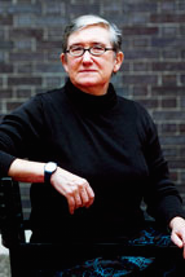
Janet Halley, the Royall Professor of Law at Harvard, discussed a realist analysis of rape law on Feb. 12. Halley has an extensive curriculum vitae and has also published several books and articles including: Split Decisions: How and Why to Take a Break from Feminism, and Don't: A Reader's Guide to the Military Anti-Gay Policy. The lecture was sponsored by the Levitt Center.
Halley's talk was centered on a famous rape law case called Rusk v. State, in which Edward Rusk allegedly raped a young woman named Pat. However, the details in this case are unclear and highly contested. What is significant about it, as Halley demonstrated, was that the main piece of evidence against Rusk was that Pat claims to have been threatened by “the look in his eyes.” The lecture then focused on when it is appropriate to use such highly subjective evidence to establish guilt, and more broadly, how rape laws should be written to avoid both incarcerating innocents and letting the guilty go free.
To explore this issue, she laid out five possible scenarios, each relying upon only the uncontested information in the case, but tweaking the personalities and characteristics of Pat and Edward slightly. For instance, on one side of the spectrum, Pat was a woman who rationally perceived a threat to rape, and yet let it happen because she rationally felt there was a greater imminent threat. Edward in this case would also enjoy rape and would have intended to rape Pat. If all rape cases were like this, Halley argues, we should always believe the woman and would have a low standard for what is considered rape.
On the other end of the spectrum Pat is a woman who lied about having consensual sex and frames Edward for rape. If all rape cases were like this, we should potentially consider instituting strict rules that require a certain number of witnesses in order for something to be considered rape. The other three cases fell between these extremes.
The world is too complex to make laws that account for only one possible scenario. As Halley commented, “We don’t live in a world in which there’s not scheming liars and which there’s no men that wake up and say ‘rape day.’ We live in a world with both those people.” In other words, making laws that always believe the woman, or that make it very difficult to bring a rape case to trial would lead to injustice. The only way we can achieve some semblance of justice for the majority of people is to take our laws somewhere in between those two extremes.
Controversy over strictness complicates the issue. Halley pointed to the fact that there are disagreements between feminist communities as to how strictly rape laws should be written. She discussed compelling arguments from conservative and liberal feminists that favored both extremes. This illustrated that the issue of rape law and justice for involved parties is more than just one of gender differences. While gender differences certainly exist, there are also class differences, race differences, and political and cultural backgrounds that need to be considered in determining what is fair.
When asked what she believed the ideal rules would look like, Halley replied “We could do so much more to deal with this problem, and I think the simple answer is ‘let’s just punish our way out of it’ and that won’t work.” She argued that instead of focusing so much on the punitive aspects of rape and sexual assault, more efforts should be made to increase awareness about sexual assault and the dangers of drinking with regard to rape.
But she also is a proponent of the idea that more mediation should be used in resolving these cases, so that we can reduce the injustices done from both incarcerating innocents and from letting guilty people go free.
Posted February 13, 2015
